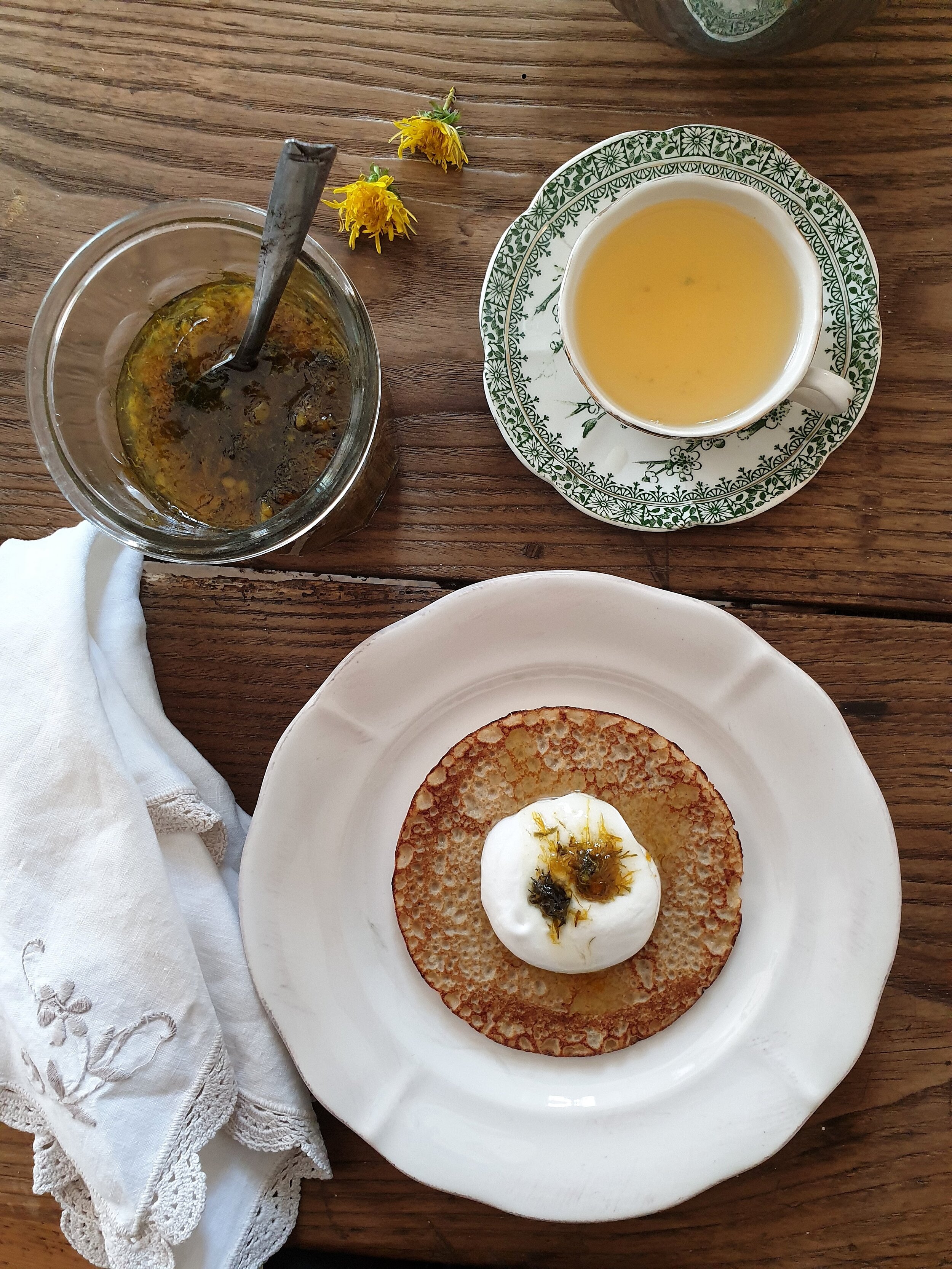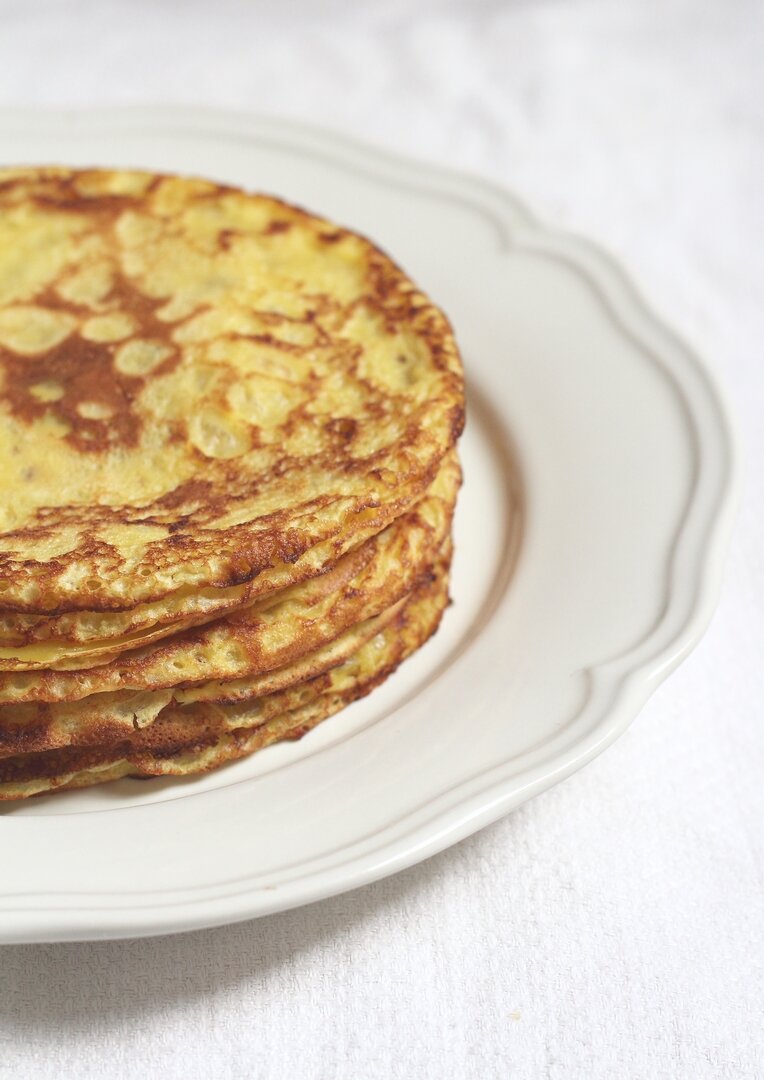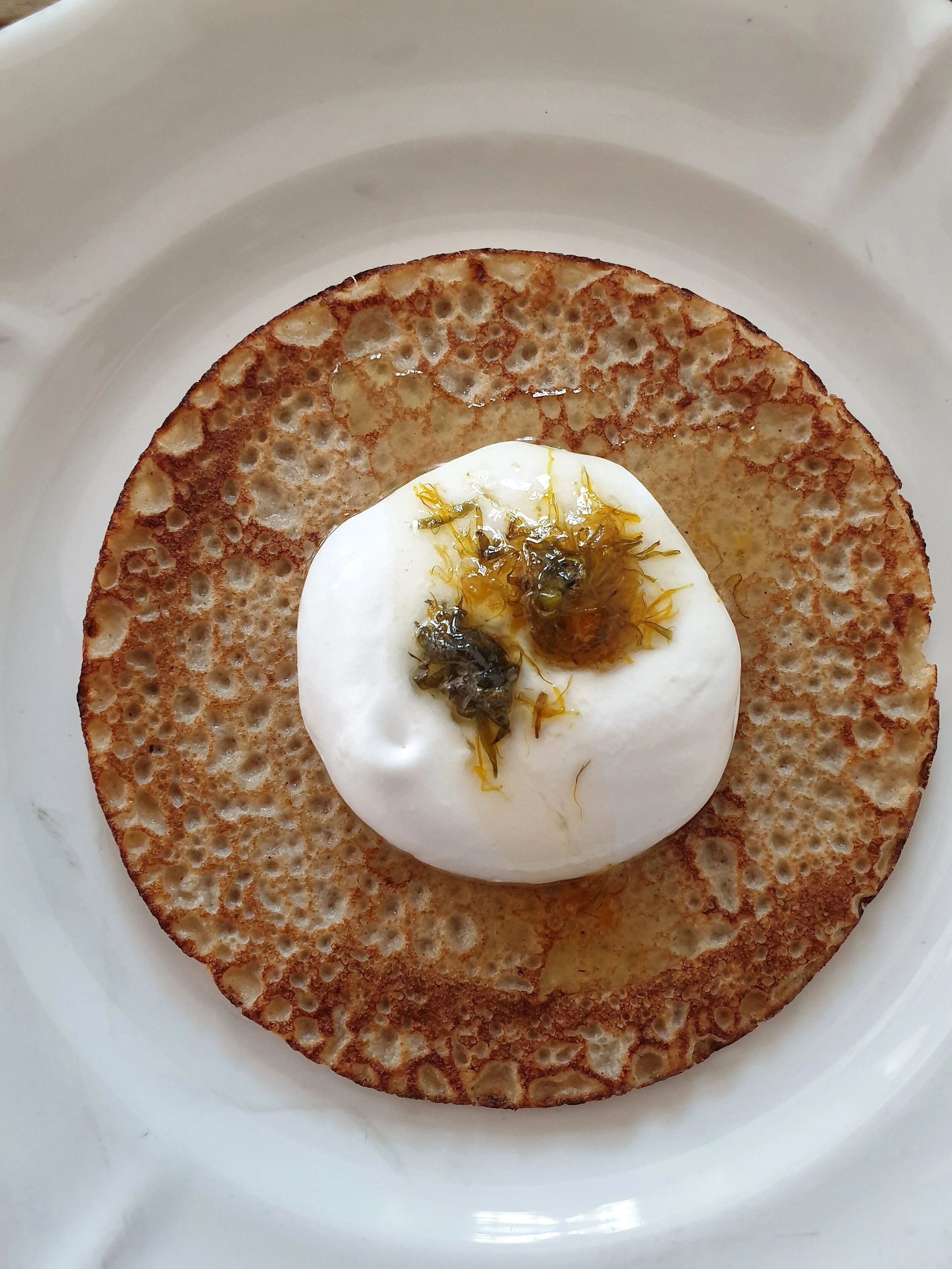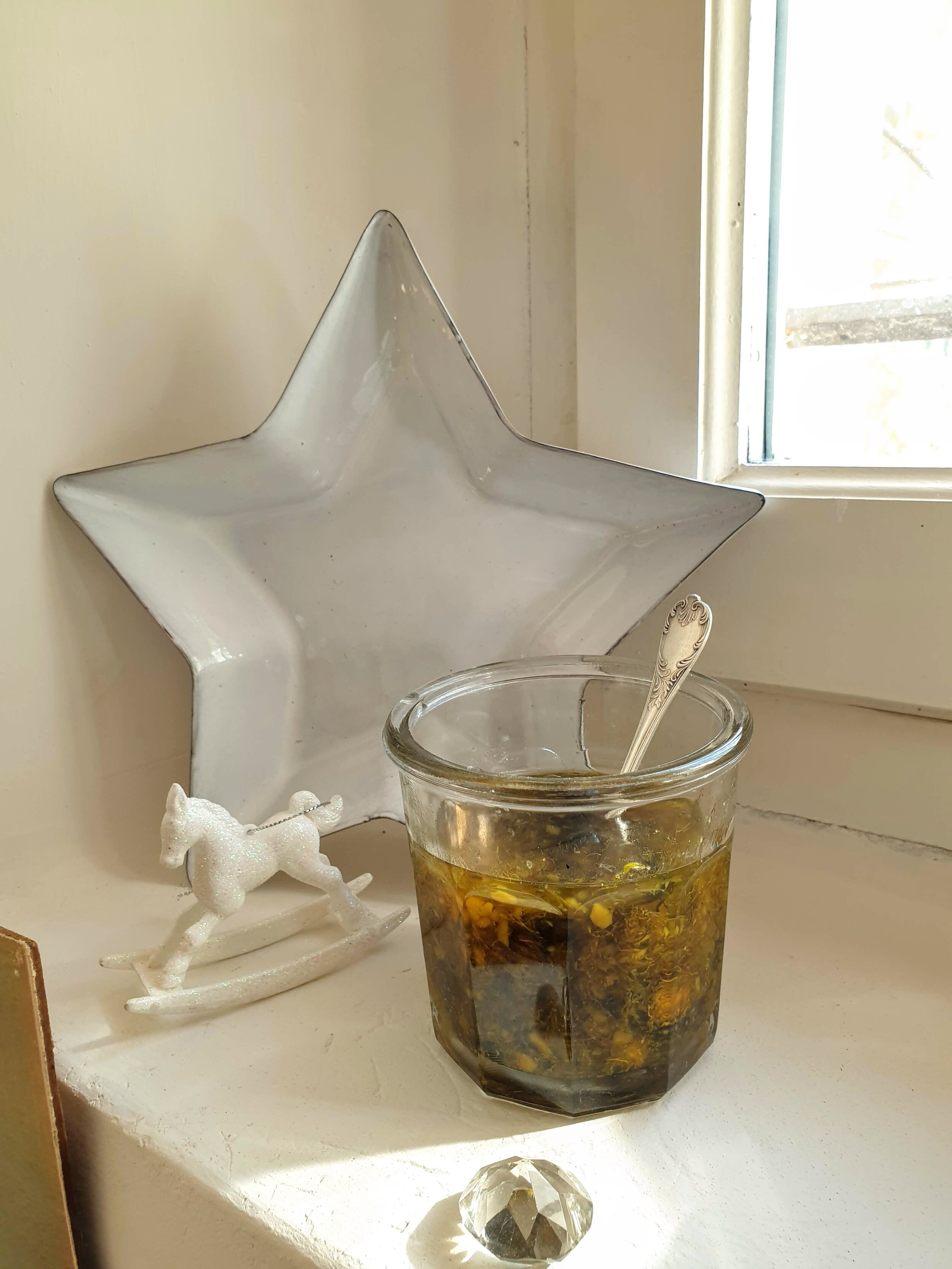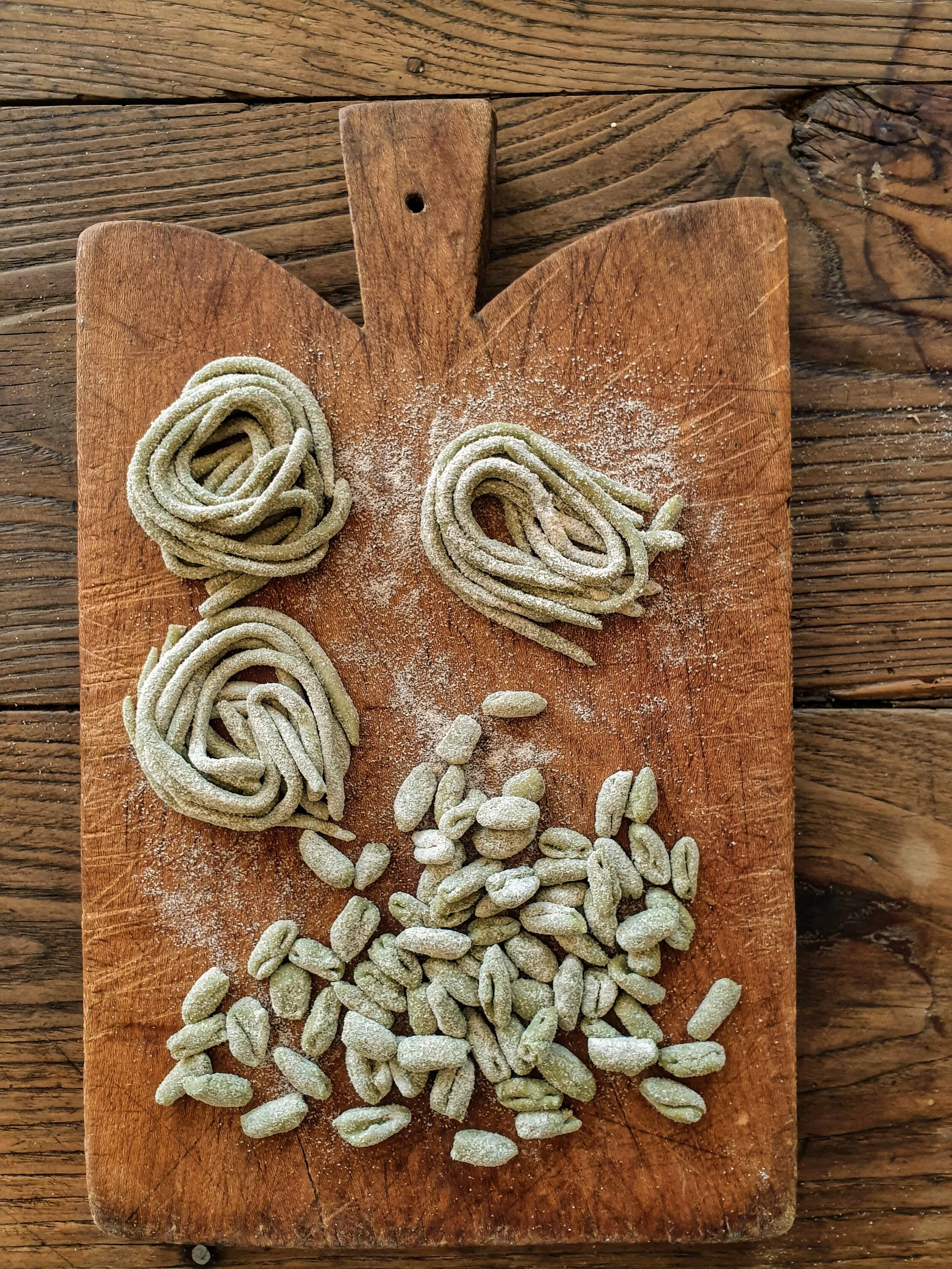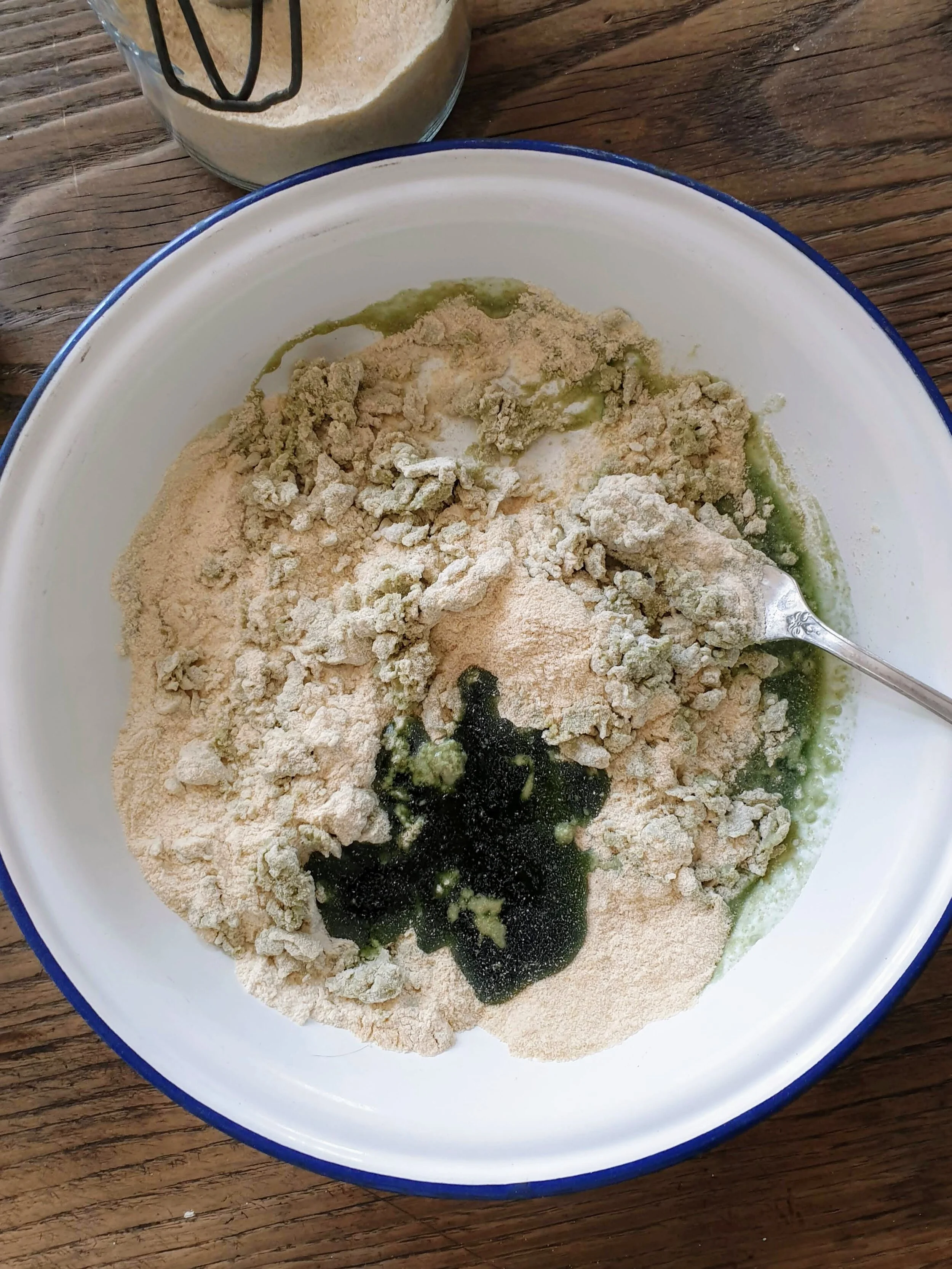This recipe for crepes is the one I use both for savoury and sweet, and with which I obtain thin, light and irresistible crèpes. Among the ingredients, you will find water (it serves to make the crepe thinner) and clarified butter to cook it. In essence, its peculiarity is to have a smoke point similar to extra virgin olive oil, so it does not burn and gives a delicious flavour to the crepes. You can find how to make clarified butter online. There are lots of videos about the subject.
Crêpes and Dandelion flowers’jam
Ingredients for about ten crepes
Two eggs, 150 gr of all-purpose flour, you can also mix flours of your choice, 350 ml of full-fat milk, 50 ml of water, ½ teaspoon of salt, 30 gr of clarified butter
Directions.
I Break the eggs in a bowl, beat them a little with the whisk, start adding alternating the sifted flour and the milk /water, mix well until I have a slightly liquid and smooth batter. I Add the salt, mix and leave to rest for at least an hour in the fridge. It is possible to prepare the mixture the day before, and for me, it gets even better.
To cook good crepes, you need a heavy pan, because of its capability of retaining the heat. I put the pan on high heat, and I grease it with the melted clarified butter. For this, I prefer to use a silicone brush because it’s the only one that can resist the high heath. The important thing is to grease very well the pan, in this way I obtain that delicious crepes that in France are called Crepes dentelle, which means laced crepes. I also want them slightly browned, which gives a better taste.
I prepare a measuring cup and thus to have the exact dose to be poured so that I can throw it in one go. At this point, I rotate the pan to spread the paste evenly, cook until it is golden brown, then turn it and finish cooking on the other side. Once it is ready, I slide it onto a plate and so I do with the remainings, building up a pile. If I have leftover, I cover with a film and keep in the fridge.
Dandelion flowers jam
It’s springtime, and as I live in beautiful countryside, I can go foraging as much as I like. This jam’s like honey, even the taste makes me think of dandelion honey, which doesn’t exist, I guess.
I give you the quantities to make a medium pot of jam, for the flowers, as my scale was out of use, I got a bowl for soups full of flowers, 300 ml of water, 200 gr of sugar, juice of one lemon, one spoon of freshly grated ginger. Some recipes call for using only the petals. I tried once, but I found that the taste was weaker and being a tendentially lazy person I was happy with this. So I cut the flowers at the height of the receptacle.
Directions
I wash the flowers thoroughly, and then I lay them on a clean teatowel. I put a saucepan with the water and sugar on low heat, and I mix well to dissolve the sugar. Once the sugar has dissolved, I let it cook until it starts to form bubbles evenly. Now I add the flowers, the ginger and the lemon juice and keep on cooking at the stade of jam. It is essential to stay there because when it is almost ready, it goes fast and can become too thick. The traditional way of testing a jam will work. When it’s ready, I put in a clean jar and keep in the fridge. If you make several jars, you should consider sterilizing.
I served myself ( quarantine demands) a crepe with whipped coconut cream topped with a teaspoon of dandelion jam. About the coconut cream: I prefer the one in tetra pack, it’s more fluid, and you don’t have the taste of tin. For the rest, I just whipped it as usual cream. With this, I had a wild blackberry leaves tea. To make it bring the water to boil, once it’s boiling throw a handful of leaves, switch off the fire and let sit for 10 minutes. It’s a very delicate herbal tea.

